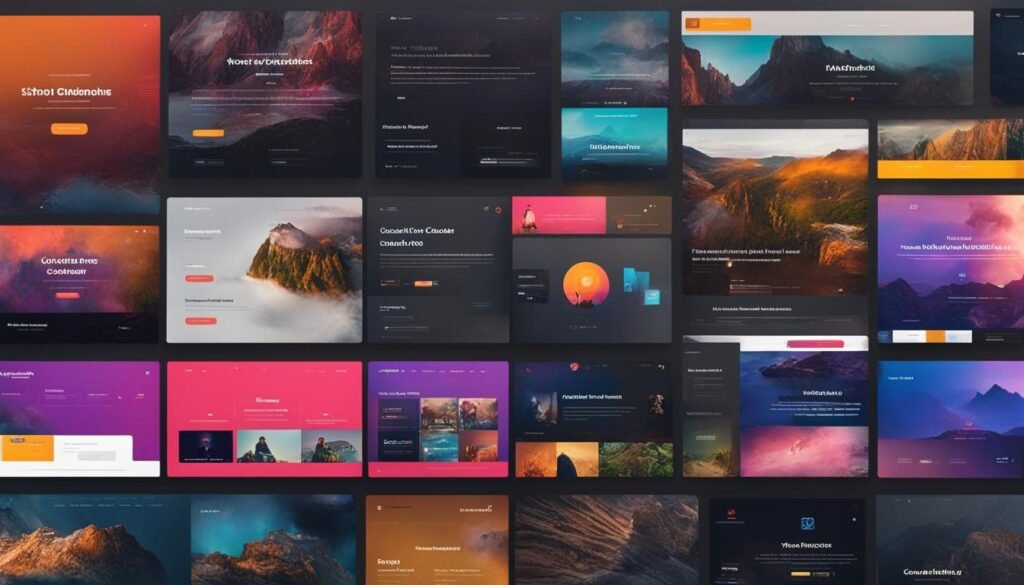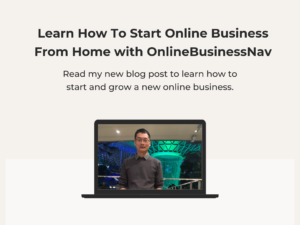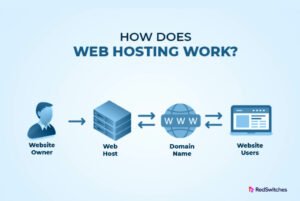Welcome to our comprehensive guide on How to get traffic on website, how to boost your site, and master the art of getting traffic to your website. In today’s digital landscape, having a steady stream of traffic is essential for online success. Whether you’re a business owner, a blogger, or an entrepreneur, increasing your website traffic can greatly impact your brand’s visibility, lead generation, and overall revenue.
In this guide, we will walk you through various strategies and techniques that will help you attract more visitors to your website and boost your online presence. From understanding the importance of website traffic to exploring SEO strategies, social media tactics, and engaging content creation, we will cover all the essential aspects of driving traffic to your website.
So, if you’re ready to take your website to new heights and drive more traffic, let’s get started!
Table of Contents
Key Takeaways:
- Website traffic is crucial for business growth and revenue.
- Tools like Google Analytics and SEMrush can help you measure and analyze your current traffic levels.
- Creating compelling content is the foundation of attracting visitors to your site.
- SEO strategies, such as researching keywords and on-page optimization, can significantly increase your website traffic.
- Leveraging social media platforms can drive traffic and engage with your target audience.
Understanding the Importance of Website Traffic
Key Reasons Why Website Traffic Matters
When it comes to building a successful online presence, website traffic is key. The more visitors you attract to your website, the greater your chances of achieving your business goals. Here are some key reasons why website traffic matters:
- Increasing Brand Visibility: Website traffic helps increase your brand’s visibility and reach. When more people visit your website, they become familiar with your brand and what you have to offer.
- Generating Leads: Website traffic allows you to capture valuable leads by collecting user information through lead generation forms or sign-ups. These leads can then be nurtured into potential customers.
- Driving Conversions: The more traffic you have, the more opportunities you have to convert visitors into paying customers. Higher website traffic increases the chances of generating sales and revenue.
Now that we’ve established why website traffic matters, let’s explore how it directly impacts business growth and revenue.
The Impact of Traffic on Business Growth and Revenue
Website traffic plays a crucial role in driving business growth and revenue. Here’s how:
- More Sales Opportunities: Increased website traffic means more potential customers visiting your website. With a larger audience, you have a higher chance of converting visitors into paying customers, leading to increased sales opportunities.
- Enhanced Brand Awareness: As your website traffic grows, so does your brand’s exposure. The more people visit your website, the more people become aware of your brand and what you offer. This increased brand awareness can lead to improved customer trust and loyalty.
- Expanded Customer Reach: With a steady stream of traffic to your website, you can expand your customer reach and target new markets. This opens up opportunities for growth and allows your business to tap into new customer segments.
- Higher Revenue Potential: When your website attracts more traffic, it creates more opportunities for revenue generation. Whether through direct sales, advertising, or affiliate partnerships, increased website traffic directly correlates with higher revenue potential.
As you can see, website traffic plays a vital role in the growth and success of your business. It is not just a vanity metric but a key driver of business outcomes. In the next section, we will explore tools and techniques to gauge your current website traffic levels.
Gauging Your Current Traffic: Tools and Metrics
Measuring and analyzing your website traffic is crucial to understanding its performance and making informed decisions to improve it. Fortunately, there are several effective tools and metrics available that can provide valuable insights into your website’s traffic patterns and user behavior.
One of the most popular and comprehensive traffic measurement tools is Google Analytics. By implementing a tracking code on your website, you can gain access to a wealth of data regarding your site’s visitors, including their demographics, geographic location, traffic sources, and engagement metrics. Google Analytics also provides vital information on page views, bounce rates, and conversions, allowing you to gauge the effectiveness of your marketing efforts and optimize your website accordingly.
SEMrush is another powerful tool that offers advanced traffic analysis capabilities. With SEMrush, you can monitor your website’s visibility in search engine results, identify your top organic keywords, and track your competitors’ traffic levels. Additionally, SEMrush provides insights into backlink profiles, social media performance, and paid advertising campaigns, giving you a comprehensive view of your website’s overall online presence.
Other traffic measurement tools worth considering include Ahrefs, Moz, and SimilarWeb. These tools offer various features such as backlink analysis, keyword research, and competitor benchmarking, allowing you to gauge your website’s performance from different angles.
When evaluating your website’s traffic metrics, it’s important to focus on key performance indicators (KPIs) that align with your goals. Some of the commonly tracked metrics include:
- Page views: The total number of pages viewed on your website.
- Bounce rate: The percentage of visitors who navigate away from your site after viewing only one page.
- Conversion rate: The percentage of visitors who complete a desired action, such as making a purchase or filling out a form.
- Average session duration: The average length of time visitors spend on your site.
- Traffic sources: The channels through which visitors are finding your website, such as organic search, social media, or referrals.
By regularly monitoring these key metrics and leveraging traffic measurement tools, you can gain a deeper understanding of your website’s performance and make data-driven decisions to optimize your traffic generation strategies.
Creating Compelling Content: The Foundation of Traffic Generation
When it comes to attracting more visitors to your website, compelling content is the key. Quality content not only engages your audience but also drives organic traffic, increases social shares, and improves search engine rankings. By focusing on creating content that is both informative and engaging, you can effectively generate traffic and achieve your website goals.
How Quality Content Attracts More Visitors
Quality content acts as a magnet, drawing in visitors and keeping them engaged on your site. When your content is valuable, relevant, and well-crafted, it resonates with your target audience and compels them to stay longer, explore your website further, and ultimately convert into customers or leads.
By consistently producing high-quality content, you establish yourself as a trusted source in your industry. This not only attracts new visitors but also encourages repeat visits, as people come back to consume more of your valuable content. Quality content builds credibility and trust, which are crucial factors in driving traffic and building a loyal audience.
Ideas for Engaging and Shareable Content
To create engaging and shareable content, consider the following ideas:
- Informative Blog Posts: Share your knowledge and expertise by creating informative blog posts that provide valuable insights and solutions to your audience’s pain points.
- Visual Content: Incorporate visually appealing elements such as images, infographics, and videos to enhance the readability and shareability of your content.
- Case Studies and Success Stories: Showcase real-life examples of how your product or service has positively impacted your customers, highlighting their success stories.
- Interactive Content: Engage your audience with interactive content such as quizzes, surveys, polls, or calculators, encouraging them to actively participate and share their results.
- Expert Interviews: Conduct interviews with industry experts or influencers to provide unique perspectives and insights that your audience can benefit from and share with others.
- Guides and Tutorials: Create comprehensive guides or step-by-step tutorials that help your audience solve specific problems or achieve their goals.
Remember, compelling and shareable content is not limited to the ideas listed above. Explore different formats, experiment with storytelling techniques, and consider your audience’s preferences to create content that resonates and encourages sharing.

| Benefits of Compelling Content | Actions to Take |
|---|---|
| Drives organic traffic | Create keyword-optimized content and focus on SEO best practices. |
| Increases social shares | Encourage social sharing by incorporating social sharing buttons and creating content that evokes emotion or provides value. |
| Improves search engine rankings | Regularly publish fresh, high-quality content that is optimized for target keywords and provides a great user experience. |
How to Get Traffic on Website with SEO Strategies
When it comes to increasing website traffic, employing effective SEO strategies is crucial. By optimizing your website for search engines, you can improve your visibility and attract more organic traffic. In this section, we will explore two key aspects of SEO: researching and targeting the right keywords and implementing on-page optimization techniques.
Researching and Targeting the Right Keywords
Keyword research is the foundation of any successful SEO campaign. By identifying the keywords that your target audience uses when searching for relevant information, products, or services, you can position your website to appear in their search results.
To conduct keyword research, you can utilize various tools such as Google Keyword Planner, SEMrush, or Moz Keyword Explorer. These tools provide valuable insights into search volume, competition, and related keywords. Aim to target keywords that have a high search volume and low competition to maximize your chances of ranking well in search engine results.
Once you have identified relevant keywords, strategically incorporate them into your website content. Optimize your meta tags, headings, URLs, and page content to signal to search engines the relevance of your website to those keywords.
On-Page Optimization Techniques for Better Rankings
In addition to keyword targeting, on-page optimization plays a vital role in improving your website’s search engine rankings. By implementing the following techniques, you can enhance your website’s visibility and attract more organic traffic:
- Optimize your meta tags: Craft compelling meta titles and descriptions that accurately describe your content and entice users to click through to your website.
- Use heading tags: Organize your content using headings (H1, H2, H3, etc.) to provide a clear structure for both users and search engines. Incorporate your targeted keywords in your headings.
- Improve website speed: Optimize your website’s loading speed to enhance user experience and decrease bounce rates. You can achieve this by compressing images, minifying CSS and JavaScript files, and utilizing caching techniques.
- Create quality content: Develop informative, engaging, and shareable content that naturally incorporates your targeted keywords. This will help attract links from other websites, improving your website’s authority.
- Optimize URL structure: Use descriptive and keyword-rich URLs that clearly indicate the content of each page. Avoid lengthy or cryptic URLs that may confuse both users and search engines.
By implementing these on-page optimization techniques, you can improve your website’s search engine rankings and attract more organic traffic.
Next, we will move on to Section 6, where we will explore the power of leveraging social media to drive website traffic.
Leveraging Social Media to Drive Website Traffic
In today’s digital landscape, social media has emerged as a powerful tool for businesses to connect with their target audience and drive website traffic. By implementing effective social media marketing strategies, you can leverage platforms such as Facebook, Instagram, Twitter, and LinkedIn to promote your content, engage with your audience, and ultimately drive traffic to your website.
One of the key advantages of leveraging social media is its ability to reach a large and diverse audience. With billions of active users on various social platforms, you have the opportunity to tap into a vast pool of potential visitors for your website. By creating compelling and shareable content, you can spark the interest of social media users and encourage them to click through to your website.
When using social media to drive website traffic, it is important to engage with your audience regularly. Responding to comments, starting conversations, and sharing valuable content can help build a loyal community and encourage users to visit your website for more information. By fostering meaningful interactions, you increase the likelihood of converting social media users into website visitors.
Another effective strategy is to optimize your social media profiles and posts for search engines. By incorporating relevant keywords and hashtags into your content, you can improve the visibility of your social media posts in search results. This increased visibility can generate organic traffic to your website, especially when users are actively searching for topics related to your industry or niche.
Additionally, social media platforms often offer various advertising options that allow you to target specific demographics and interests. By strategically running social media ads, you can reach a highly relevant audience and drive targeted traffic to your website. This precision targeting ensures that the visitors coming to your website are more likely to be interested in your products or services, increasing the potential for conversions.
Remember to track the performance of your social media efforts using analytics tools. By analyzing metrics such as engagement, click-through rates, and conversions, you can gain insights into the effectiveness of your social media marketing strategy. These insights will help you make data-driven decisions and optimize your efforts to further drive website traffic.
In conclusion, social media marketing offers vast opportunities for businesses to drive website traffic. By leveraging platforms such as Facebook, Instagram, Twitter, and LinkedIn, engaging with your audience, optimizing your content for search engines, and utilizing targeted advertising options, you can effectively increase traffic to your website. Incorporate social media into your digital marketing strategy and unlock the potential to reach and engage with a larger audience, ultimately driving more visitors to your website.
Building a Strong Backlink Profile
In order to improve your website’s SEO and drive traffic, it is crucial to focus on building a strong backlink profile. Backlinks play a significant role in search engine optimization by indicating to search engines that your content is valuable and trustworthy.
The Role of Backlinks in SEO
Backlinks are links from external websites that point back to your site. They are considered as votes of confidence, indicating to search engines that other websites find your content valuable and worth linking to. The more high-quality backlinks you have, the more authority and credibility search engines attribute to your website, resulting in higher search rankings and increased organic traffic.
Acquiring high-quality backlinks requires a strategic approach. Here are some effective strategies to help you obtain quality backlinks:
- Create Valuable Content: Producing high-quality, informative, and engaging content is essential for attracting natural backlinks from other websites. When your content provides value to readers, it increases the chances of other websites linking to it.
- Guest Blogging: Writing guest posts for reputable websites in your industry is a great way to build backlinks. By contributing valuable content to other websites, you can include a link back to your own site, driving referral traffic and improving your backlink profile.
- Build Relationships: Networking and building relationships with industry influencers, bloggers, and webmasters can help you secure backlinks. Collaborating on content, interviews, or co-authoring articles can lead to valuable backlinks from authoritative sources.
- Broken Link Building: Identifying broken links on other websites and offering to replace them with relevant content from your site is a smart way to acquire backlinks. This strategy benefits both parties by providing valuable content and fixing broken links for the website owner.
- Social Media Promotion: Sharing your content on social media platforms can increase its visibility and reach, attracting attention and potential backlinks from other users and websites.
Remember, when it comes to backlinks, quality matters more than quantity. Focus on acquiring backlinks from reputable, authoritative websites in your industry. Building a strong backlink profile takes time and effort, but the long-term benefits for your website’s SEO and traffic make it worthwhile.
Email Marketing: Nurturing Visitors to Return
In today’s digital landscape, email marketing remains a powerful tool for nurturing visitors and encouraging them to return to your website. By building an email list and implementing effective email campaigns, you can engage with your audience and drive repeat traffic. Additionally, personalizing your communication can create a personalized experience that resonates with your subscribers, further increasing visitor retention.
Building an email list is the first step in email marketing. By offering valuable content or incentives, such as exclusive discounts or access to resources, you can entice visitors to subscribe to your emails. This allows you to establish a direct line of communication with them, making it easier to nurture and engage them over time.
Once you have a sizeable email list, creating engaging email campaigns becomes essential. Craft compelling subject lines that grab attention and encourage recipients to open your emails. Focus on providing valuable and relevant content that keeps subscribers engaged and encourages them to explore your website further.
Personalization is another key aspect of successful email marketing. By segmenting your email list based on subscriber preferences, demographics, or behavior, you can tailor your messages to specific groups. Personalize the email content and recommendations, making them more meaningful to each recipient and increasing the likelihood of them returning to your site.
In conclusion, email marketing is a valuable strategy for nurturing visitors and driving repeat traffic to your website. By building an email list, creating engaging email campaigns, and personalizing your communication, you can strengthen your relationship with your audience and increase visitor retention. Don’t underestimate the power of email marketing in keeping your visitors engaged and eager to return to your site.
Mastering the Art of Headline Writing
In the world of content promotion, crafting irresistible headlines is crucial to grab the attention of your audience and drive traffic to your website. The power of headlines lies in their ability to captivate readers and compel them to click, read, and share your content. An enticing headline can make all the difference in the success of your content marketing efforts.
The Power of Headlines in Content Promotion
Headlines play a pivotal role in enticing users to engage with your content. They serve as your first and often only chance to make a strong impression and convince readers that your content is worth their time. Research shows that 8 out of 10 people read headlines, but only 2 out of 10 continue reading the entire article. This highlights the importance of creating attention-grabbing headlines that pique curiosity and generate clicks.
An irresistible headline not only grabs attention but also communicates the value and relevance of your content. It should provide a clear and compelling promise of the benefits readers will gain from consuming your content. A headline that resonates with your target audience’s needs and desires is more likely to attract clicks and drive traffic to your website.
Tools and Techniques for Crafting Irresistible Headlines
Creating irresistible headlines requires a combination of creativity, strategic thinking, and an understanding of your audience. Fortunately, there are tools and techniques that can help you craft captivating headlines that capture attention and drive traffic:
- 1. Headline Analyzers: Use online tools like CoSchedule’s Headline Analyzer or Advanced Marketing Institute’s Emotional Marketing Value Headline Analyzer to evaluate the effectiveness of your headlines. These tools analyze factors such as headline length, emotional impact, and power words to provide feedback and suggestions for improvement.
- 2. A/B Testing: Test different variations of your headlines to see which ones perform better. By conducting A/B tests, you can identify the most impactful elements and optimize your headlines for maximum engagement and click-through rates.
- 3. Power Words: Incorporate powerful and emotive words in your headlines to evoke emotion and spark curiosity. Words like “ultimate,” “essential,” “proven,” and “unveiled” can add a sense of urgency and exclusivity to your content, making it more enticing for readers.
- 4. Numbered Lists: Including numbers in your headlines can make them more enticing and easy to digest. For example, “10 Proven Strategies to Boost Website Traffic” instantly communicates the value and structure of your content, making it more appealing to readers.
- 5. Question Headlines: Pose a thought-provoking question in your headline to engage readers and encourage them to click. Questions create curiosity and compel readers to seek answers, making them effective in driving traffic to your website.
To truly master the art of headline writing, it’s essential to continuously analyze and optimize your headlines based on audience response and engagement metrics. Monitor the performance of your headlines, experiment with different techniques, and learn from the data to refine your headline writing skills and drive consistent traffic to your website.
Maximizing Click-Through Rates with Meta Descriptions
Meta descriptions play a crucial role in maximizing click-through rates (CTR) from search engine results pages. The meta description is a short summary of your web page content that appears beneath the page title in search results. It serves as a preview, providing users with a glimpse of what they can expect if they click on your website.
To maximize CTR, it’s essential to write compelling meta descriptions that entice users to click. Here are some best practices to keep in mind:
- Be concise and specific: Keep your meta description between 150-160 characters and ensure it accurately reflects the content of your page. Be specific about what users will find on your website to attract the right audience.
- Highlight benefits and unique selling points: Use the meta description to showcase the unique value your page offers. Focus on the benefits that users can gain by visiting your website and highlight what sets you apart from competitors.
- Include relevant keywords: Incorporate relevant keywords in your meta description to match user search queries. This helps search engines understand the relevance of your page and increases the chances of appearing in search results.
- Evoke curiosity or emotion: Craft a meta description that sparks curiosity or emotion to grab users’ attention. Use compelling language, ask a question, or make a bold statement to entice users to click on your website.
- Avoid misleading or clickbait descriptions: While it’s essential to make your meta description enticing, avoid misleading users with false information or exaggerated claims. Provide an honest preview of your page to establish trust with your audience.
By following these best practices, you can create meta descriptions that attract users’ attention and maximize your click-through rates. The more enticing and relevant your meta descriptions are, the more likely users will click on your website, driving more traffic and potential conversions.

Utilizing Multimedia: Incorporating Video and Images
Incorporating multimedia, such as videos and images, into your website can significantly boost traffic and engagement. Visual content has the power to captivate your audience, amplify their engagement, and encourage social shares. To maximize the benefits of multimedia, it’s important to optimize your videos and images for search engines. Here are some tips for optimizing your multimedia content:
How Visuals Can Amplify Engagement and Shares
Visuals play a crucial role in capturing and retaining your audience’s attention. They have the ability to convey complex information quickly and engage viewers on a deeper level. Incorporating videos and images in your content can:
- Enhance storytelling: Videos and images can help you tell compelling stories that resonate with your audience.
- Improve engagement: Visual content is more likely to grab attention and keep visitors on your website for longer periods.
- Encourage social shares: People are more likely to share content that includes visuals, expanding your reach and driving more traffic to your site.
- Increase conversions: Videos and images can showcase your products or services in action, leading to higher conversion rates.
To leverage the power of visuals, consider incorporating them strategically throughout your website and optimizing them for search engines.
Tips for Optimizing Images and Videos for Search
Search engine optimization (SEO) can help your multimedia content rank higher in search engine results, driving organic traffic to your website. Here are some tips for optimizing your images and videos:
- Use descriptive file names: When saving your image or video file, use descriptive filenames that include relevant keywords. This helps search engines understand the content of your media.
- Add alt tags: Alt tags provide alternative text that describes your image or video. Use keywords in the alt tags to help search engines understand the context and purpose of your multimedia content.
- Optimize image sizes: Large image file sizes can slow down your website, leading to a poor user experience. Compress your images without compromising their quality to ensure fast loading times.
- Include captions and transcripts: Adding captions and transcripts to your videos not only improves accessibility but also provides additional text for search engines to index. Use relevant keywords in your captions and transcripts.
- Provide schema markup: Incorporate schema markup for your videos and images to provide search engines with structured data, making it easier for them to understand and display your multimedia content in search results.
By optimizing your images and videos for search engines, you can increase their discoverability and drive more organic traffic to your website.
How to Get Traffic on Website by Engaging with Influencers
In today’s digital age, influencers have become powerful voices that can significantly impact consumer behavior and brand perception. By engaging with influencers in your industry, you can tap into their reach and influence to drive traffic to your website. Influencer marketing is an effective strategy that can help you gain exposure, increase brand awareness, and ultimately attract more visitors.
There are several influencer marketing strategies you can employ to get traffic to your website:
- Collaborations: Partnering with influencers on content collaborations, such as co-creating blog posts or videos, can expose your brand to a wider audience and drive traffic to your website.
- Guest Blogging: Writing guest posts for influencers’ blogs or inviting influencers to contribute to your blog can help you reach their audience and establish your brand as an authority in your industry.
- Social Media Partnerships: Collaborating with influencers on social media campaigns, such as hosting giveaways or Instagram takeovers, can generate buzz and attract their followers to your website.
Remember, when engaging with influencers, it’s crucial to choose those whose values align with your brand and have a genuine connection with their audience. Authenticity is key in building trust and driving meaningful traffic.
To illustrate the power of influencer marketing, let’s take a look at the following example:
| Influencer | Platform | Reach | Collaboration | Website Traffic Generated |
|---|---|---|---|---|
| Amy Johnson | 100,000 followers | Product review and giveaway | 500 visitors | |
| Mark Stevens | YouTube | 250,000 subscribers | Sponsored video | 1,000 visitors |
| Sarah Thompson | Blog | 50,000 monthly page views | Guest blog post | 800 visitors |
This table showcases the results of collaborating with influencers. By leveraging the power of influencer marketing, you can drive a considerable amount of traffic to your website.
When engaging with influencers, it’s essential to establish clear goals and metrics to measure the impact of your collaborations. Monitor and analyze your website traffic, track engagement metrics, such as click-through rates and conversions, and adjust your influencer marketing strategies accordingly to optimize results.
By effectively engaging with influencers, you can harness their influence and credibility to drive targeted traffic to your website and expand your online presence. Influencer marketing is a valuable strategy that can deliver tangible results and help you achieve your traffic goals.
Improving Site Performance for Better User Experience
In today’s digital landscape, site performance is a crucial factor for attracting and retaining website visitors. A slow-loading website can significantly impact user experience, leading to high bounce rates and a decrease in conversions. Therefore, optimizing your site’s performance is essential to provide a seamless browsing experience while driving traffic and increasing engagement.

Page Speed Optimization and Its SEO Benefits
One of the critical aspects of site performance is page speed optimization. The speed at which your webpages load directly affects user experience and search engine ranking. Slow-loading pages frustrate users and can lead to them leaving your site before exploring the content or making a purchase.
Furthermore, page speed is a ranking factor in search engine algorithms. Search engines like Google prioritize fast-loading websites since they provide a better user experience. By improving your page speed, you can enhance your SEO efforts and increase your chances of ranking higher in search engine results pages (SERPs).
Implementing techniques such as minifying CSS and JavaScript, optimizing image size, and leveraging browser caching can significantly improve page load times. Regularly monitoring and optimizing your website’s speed is crucial for providing a smooth and efficient user experience.
Mobile Responsiveness as a Ranking Factor
In today’s mobile-driven world, having a mobile-responsive website is no longer optional. With the majority of internet users accessing websites through mobile devices, it is crucial to ensure that your site is optimized for mobile responsiveness.
Mobile responsiveness refers to the ability of a website to adapt and display correctly on different devices and screen sizes. Google and other search engines prioritize mobile-friendly websites and consider mobile responsiveness as a ranking factor. Websites that provide seamless mobile experiences are more likely to appear higher in mobile search results.
Optimizing your website for mobile responsiveness involves using responsive web design techniques, such as fluid layout, flexible images, and media queries. This ensures that your site is accessible and visually appealing across various devices, providing an excellent user experience for both mobile and desktop users.
By prioritizing page speed optimization and mobile responsiveness, you can improve your site’s performance, enhance user experience, and ultimately drive more traffic to your website. Remember, a fast-loading and mobile-friendly website is essential in today’s competitive digital landscape.
Monitoring and Adjusting Your Strategies with Analytics
In order to maximize the effectiveness of your traffic generation strategies, it is essential to monitor and adjust your approaches based on data-driven insights. Analytics play a crucial role in providing you with the information necessary to evaluate the performance of your strategies and make informed optimizations.
When it comes to monitoring your strategies, there are several key metrics and analytics tools that you should focus on:
- Website Traffic: Keep a close eye on the overall traffic levels to your website. This metric helps you assess the effectiveness of your marketing efforts and identify any trends or patterns.
- Bounce Rate: Monitoring the bounce rate, which is the percentage of visitors who navigate away from your site after viewing only one page, can give you insights into the quality of your content and the user experience. A high bounce rate may indicate a need to optimize your landing pages or improve the relevance and engagement of your content.
- Conversion Rates: Tracking the conversion rates allows you to measure the success of your traffic generation strategies in terms of achieving your desired actions, such as signing up for a newsletter or making a purchase. Analyzing conversion rates can help you identify areas for improvement and implement targeted adjustments.
- Engagement Metrics: Analyzing metrics such as time on page, scroll depth, and social shares can provide insights into how users interact with your content. By monitoring these engagement metrics, you can gauge the effectiveness of your content and identify opportunities for optimization.
With the help of analytics tools like Google Analytics, you can easily access and interpret these metrics, allowing you to gain valuable insights into the performance of your traffic generation strategies.
Once you have gathered data from your analytics tools, it’s time to make adjustments to your strategies based on the insights you have gained. This could involve experimenting with different content formats, refining your targeting, or optimizing specific elements of your website for better performance.
Remember, monitoring and adjusting your strategies with the help of analytics is an ongoing process. Continuously tracking and analyzing the performance of your website traffic will enable you to stay ahead of trends, identify areas for improvement, and make data-driven optimizations for sustained success.
“Analytics provide the compass to navigate the ever-changing landscape of traffic generation and optimize your strategies for maximum effectiveness.”
Conclusion
Reflecting on the journey to increased website traffic, you’ve learned a multitude of strategies and techniques to attract visitors and drive engagement. By implementing these tactics, you’ve taken a significant step towards growing your online presence and achieving your business goals.
However, the journey doesn’t end here. The world of digital marketing is constantly evolving, and to maintain your success, ongoing learning and adaptation are essential. Stay curious and keep up with the latest traffic-building techniques to capitalize on emerging trends and opportunities.
Remember, building website traffic is not a one-time endeavor. It requires consistent effort and experimentation to find what works best for your particular audience and niche. Don’t be afraid to test new strategies, analyze data, and refine your approach based on insights gained.
As you continue your traffic-building journey, stay committed to delivering value to your audience through high-quality content, engaging social media presence, and meaningful interactions with influencers. By doing so, you’ll foster a loyal following and attract even more visitors to your website.
FAQ
Why is website traffic important?
Website traffic is important because it increases brand visibility, generates leads, and drives conversions. It plays a crucial role in business growth and revenue.
How can I measure my website traffic?
There are various tools and metrics you can use to gauge your current traffic levels. Popular tools include Google Analytics and SEMrush, which provide insights into traffic sources, page views, and bounce rates.
How does compelling content attract more visitors?
Quality content drives organic traffic, increases social shares, and improves search engine rankings. By providing valuable and engaging content, you can attract more visitors to your website.
What SEO strategies can help increase website traffic?
Researching and targeting the right keywords and optimizing your content using on-page techniques, such as meta tags and URL structure, can improve your search engine rankings and drive more traffic to your website.
How can I leverage social media to drive website traffic?
By promoting your content and engaging with your audience on platforms like Facebook, Instagram, Twitter, and LinkedIn, you can increase brand visibility and drive traffic to your website.
What is the role of backlinks in driving website traffic?
Backlinks play a crucial role in SEO by improving your website’s authority and visibility. Acquiring high-quality backlinks from reputable sources can help drive traffic to your website.
How can email marketing help drive repeat traffic?
By building an email list, creating engaging email campaigns, and personalizing your communication, you can nurture visitors and encourage them to return to your website, driving repeat traffic.
How do headlines drive traffic to my website?
Compelling headlines capture attention, generate clicks, and increase social shares. By crafting irresistible headlines using tools and techniques, you can drive more traffic to your website.
How can meta descriptions maximize click-through rates?
Writing compelling meta descriptions that entice users to click on your website can improve your click-through rates from search engine results pages, driving more traffic to your website.
How can multimedia boost website traffic?
Incorporating videos and images can amplify engagement and social shares. By optimizing these visuals for search engines, you can drive organic traffic to your website.
How can engaging with influencers drive traffic to my website?
Collaborating with influencers through guest blogging, social media partnerships, and other strategies can leverage their reach and influence to drive traffic to your website.
How does site performance affect website traffic?
Improving site performance, such as optimizing page speed and ensuring mobile responsiveness, enhances user experience and attracts and retains website visitors, increasing traffic.
What metrics should I monitor to evaluate the effectiveness of my traffic generation strategies?
Key metrics to track include website traffic, bounce rate, conversion rates, and engagement metrics. By monitoring these metrics, you can make data-driven optimizations to your strategies.
How can I ensure continued success in driving traffic to my website?
Ongoing learning, adaptation, and staying up-to-date with the latest traffic-building techniques are important. Continued efforts and optimization are crucial for sustained success in driving traffic to your website.






